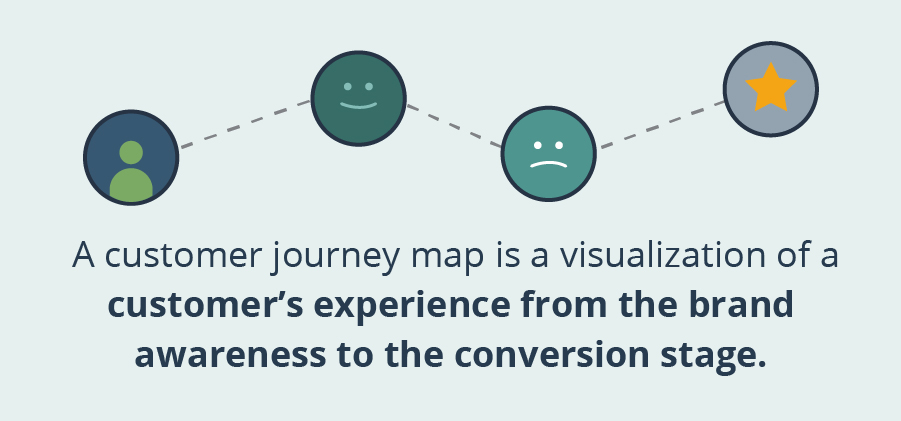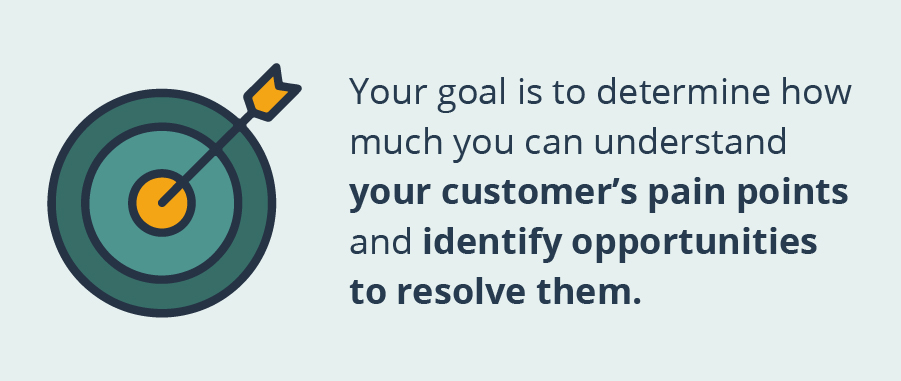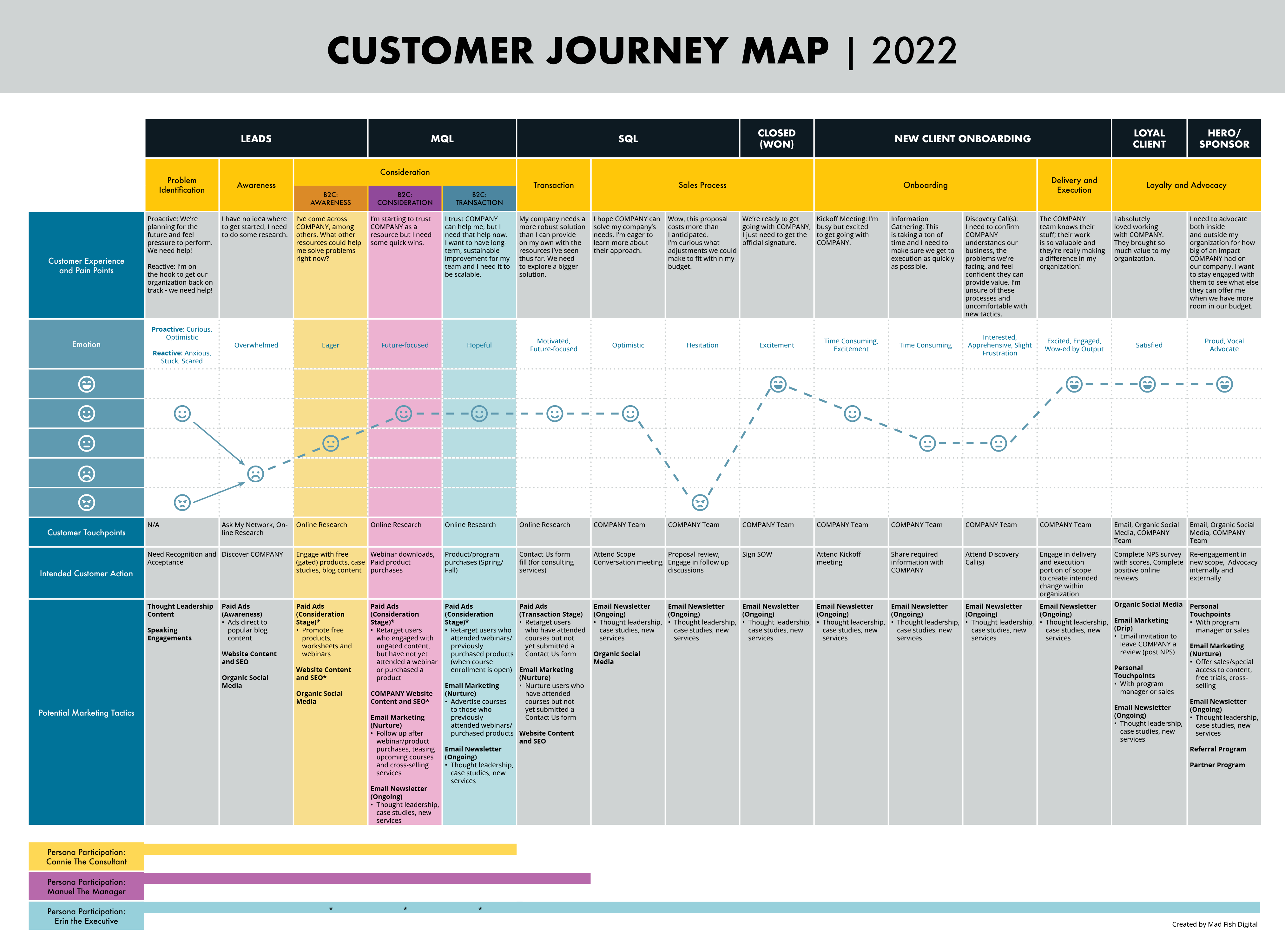A survey conducted by Salesforce demonstrated 66% of consumers expect companies to understand and anticipate their needs and expectations. Furthermore, 82% of consumers expect companies to accommodate their preferences. Companies with an understanding of their customer journey are more prepared to adjust their marketing strategy and meet expectations.
Understanding the customer journey enables digital marketers to deliver a personalized experience and anticipate pain points and objection for potential customers. Using a customer journey map, marketers can deliver a high-touch experience that can mean the difference between a customer choosing your company over your competitors.
What is a Customer Journey Map?
A customer journey map is a visualization of a customer’s experience from the brand awareness to the conversion stage. Starting with how they first hear about your company to purchasing your offer, this map shows how people interact with your business, when they experience doubt or hesitation, and highlights opportunities for solutions that ease their pain points throughout the journey.
In each stage of client interaction, the map may include customer goals, pain points, touch points, and contextual information gathered during the research phase.

Why is a Customer Journey Map Important for Digital Marketers?
A customer journey map is crucial to visualize various touch points (types of interaction or points of contact between a potential customer and your company) and opportunities for improvement. The map may also be used as a tool across internal departments to create a shared understanding of the customer journey.
A customer journey map can have massive benefits for the customer experience, including:
- A better understanding of your customers. Identifying customer needs and goals based on buyer personas can help pinpoint where they may be experiencing pain points throughout the buying process.
- Improve customer experience. Creating solutions for anticipated painpoints can showcase your company’s ability to adapt and accommodate their needs as they consider your company.
- Improve marketing strategies. Customer journey maps enable you to keep your marketing strategies up to date and reveal opportunities for innovation of existing touch points.
Creating a customer journey map helps you understand your customer’s mindset and challenges when considering your company. Your map’s value mainly depends on the quality of data gathered during the research phase.
When to Use a Customer Journey Map
It’s best to create a customer journey map when creating or updating your marketing strategy.
This map is a tool that will help you assess pain points as a customer. The visualization helps marketing teams identify opportunities to create solutions for those identified pain points.
Example customer pain points include:
- Delayed customer service
- Lack of product knowledge
- Complicated buying process
- Confusion about pricing
Solutions may be in the form of an informational webinar that provides clarity about your product, a well-timed email from a customer experience specialist, or a video with a product demonstration.
The customer journey map may also be used by your development and design teams as a guide to ensure that the offer aligns with customer expectations.
How to Create a Customer Journey Map
Creating a customer journey map doesn’t need to be a daunting task, but it is an all-hands on deck project. To be a practical resource, plan to designate enough time to fully execute the research phase. This is an opportunity to solicit input from all customer-facing departments.
Here are some tips to help you create an accurate customer journey map. The more precise your map is, the better your customer experience will be.
Do Your Research
To create a customer journey map, it’s crucial to have an understanding of your buyer personas. There are various research methods to help you, including the following:
- Consult with teams that interact with customers. What frustrations are customers experiencing? What are their most common problems and questions?
- Analyze user behavior on your website. Is the bounce rate higher than average? How long are people staying on the website? Are they scrolling to the bottom of the page?
- Collect customer feedback. Send out surveys via email or conduct personal in-dept interviews with current or former customers.
- Review your current touch points. Do your touch points answer common customer questions? Are you creating marketing assets that reflect the pain points?
Ultimately, your goal is to determine how much you can understand your customer’s pain points and identify opportunities to resolve them. Pay close attention to their pain points, goals, and other information you can use to complete your customer journey map.

Define Customer Touch Points
The type of data gathered from your research drives the precision of your customer journey map. Customer touch points are crucial to filling in your customer journey map.
Digital marketing touch points may include:
- Company website
- Paid advertising
- Product demonstration videos
- Educational Webinars
- Blog posts
As you conduct research, you’ll start identifying touch points relevant to each stage of your overall marketing funnel: awareness, consideration, and conversion.
Once you’ve defined touch points that are accurately associated with your business, you can start planning your customer journey map.
Create Your Customer Journey Map
How to start designing your customer journey map:
- Create a plan to conduct in-depth research with customer-facing teams and current customers.
- Identify customer pain points throughout the journey. What are the challenges and questions in the awareness, consideration, and conversion phases?
- Note your current touchpoints and when they occur in the journey. Do they align with current pain points and answer customer questions?
- Identify the gaps in your customer journey. Are all the pain points being addressed? Where is there an opportunity to provide additional support to potential customers?
For each stage of the journey, include digital touch points, user actions and behaviors, questions, and pain points. Use color and images to visualize the data at a glance better.

Work with a Digital Marketing Agency to Create a Customer Journey Map
In a modern world where big companies such as Google and Apple are putting a renewed focus on the user experience, smaller businesses must follow their example. To create a fantastic user experience, you must have a customer journey map.
However, creating a great customer journey map takes time and effort. If you don’t have the time, energy, or resources to do it in-house, consider working with a digital marketing agency like Mad Fish Digital.
We’ll help you create a customer journey map that improves the customer experience and helps convert leads with more ease. Contact us today!

